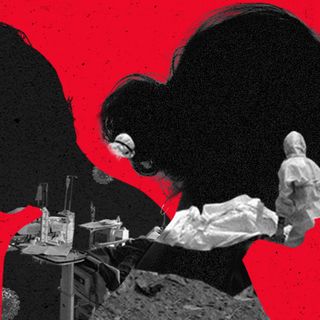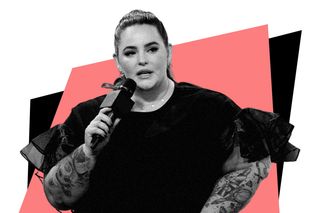
A Plus‑Size Model Shares She’s Anorexic, Proves Appearance Isn’t Sole Marker of Eating Disorders
Plus-sized individuals may be less likely to seek help because of stereotypes around what an anorexic person looks like, experts say.

American model Tess Holliday revealed she was diagnosed with anorexia nervosa this week, an eating disorder marked by reduced appetite or an aversion to food. People on the internet, however, criticized her and claimed she was lying and seeking attention with the announcement. Their reasoning was that anorexia manifests as severe malnourishment and weight loss, a widely-held perception of the condition.
“I’m anorexic & in recovery. I’m not ashamed to say it out loud anymore. I’m the result of a culture that celebrates thinness & equates that to worth, but I get to write my own narrative now. I’m finally able to care for a body that I’ve punished my entire life & I am finally free,” Holliday wrote on Twitter.
The backlash Holliday received betrays the misconception around anorexia in popular discourse. Anorexia isn’t a disease exclusive to thin people — anorexia can manifest in plus-sized individuals as atypical anorexia, or even as anorexia nervosa.
Several detractors of Holliday’s diagnosis claim she is lying because the Diagnostic and Statistical Manual of Mental Disorders- V (DSM-V), which is used as a guideline to diagnose mental illnesses, specifies that anorexia nervosa is a disease characterized by being underweight. However, DSM-V also states manifestations of anorexia don’t look the same for everyone. “Atypical anorexia includes those individuals who meet the criteria for anorexia but who are not underweight despite significant weight loss,” the manual reads.
What’s important to note here is “in context of developmental trajectory” — a plus-sized individual can be plus-sized due to a variety of chronic health and metabolism-related issues, and so, their weight loss and manifestations of anorexia will not look the same as a thin person’s manifestations of the eating disorder.
Related on The Swaddle:
Anorexia Is the Most Deadly Eating Disorder; Here’s What You Need To Know About It
Holliday herself spoke up against her detractors on Twitter, saying, “Not the ‘but your fat how are you anorexic’ comments. Y’all don’t know how science & body works huh. My technical diagnosis is anorexia nervosa & yes, I’m still not ashamed.”
The manual notes one of the ways to diagnose anorexia nervosa is via observing. “Restriction of energy intake relative to requirements leading to significantly low body weight in the context of age, sex, developmental trajectory, and physical health.”
The DSM-V adds, “Even if all the DSM-5 criteria for anorexia are not met, a serious eating disorder can still be present.”
Eating disorder charities and experts have repeatedly stated that weight stigma, or judging people’s diagnoses on the basis of their appearance, can be detrimental to plus-sized individuals suffering from eating disorders in terms of emotional and physical health.
“People with all eating disorders come in all different sized bodies. Often, individuals, families, and clinicians are resistant to weight gain that may result in a weight higher than what society deems acceptable,” according to the National Eating Disorders Association based in the U.S. “Weight stigma prevents many people with eating disorders from being diagnosed with an eating disorder, seeking treatment for an eating disorder, and/or receiving treatment for an eating disorder. And weight stigma and fatphobia make potential weight gain during recovery scary for those in any size body.”
Research also shows that individuals with anorexia — whether thin or plus-sized — face the same health complications, including cardiovascular issues. This is in tandem with DSM-V’s observation that there is no “difference in the medical and psychological impacts of anorexia and atypical anorexia.”
In an Instagram post, Holliday called out the naysayers who are complicit in fuelling a toxic culture. “Look at the collective trauma we have from just being fat in the world. Look at how many of us have suffered so long, sometimes in secret and sometimes openly and disbelieved and unseen. Look at our pain. Look at how you may be complicit in a culture that creates that, then denies its very reality. If you care about our health, care about our mental health too, because that directly impacts our physical bodies and relationship with it.”
Aditi Murti is a culture writer at The Swaddle. Previously, she worked as a freelance journalist focused on gender and cities. Find her on social media @aditimurti.
Related


17 Mount Everest Climbers Test Positive for Covid19
